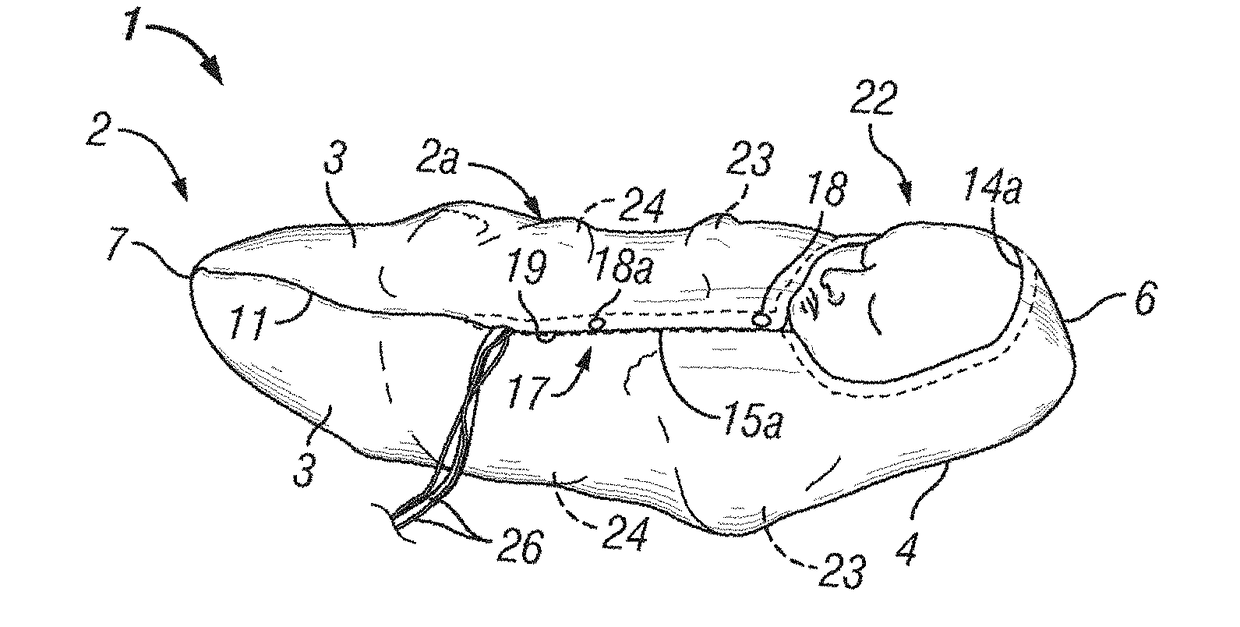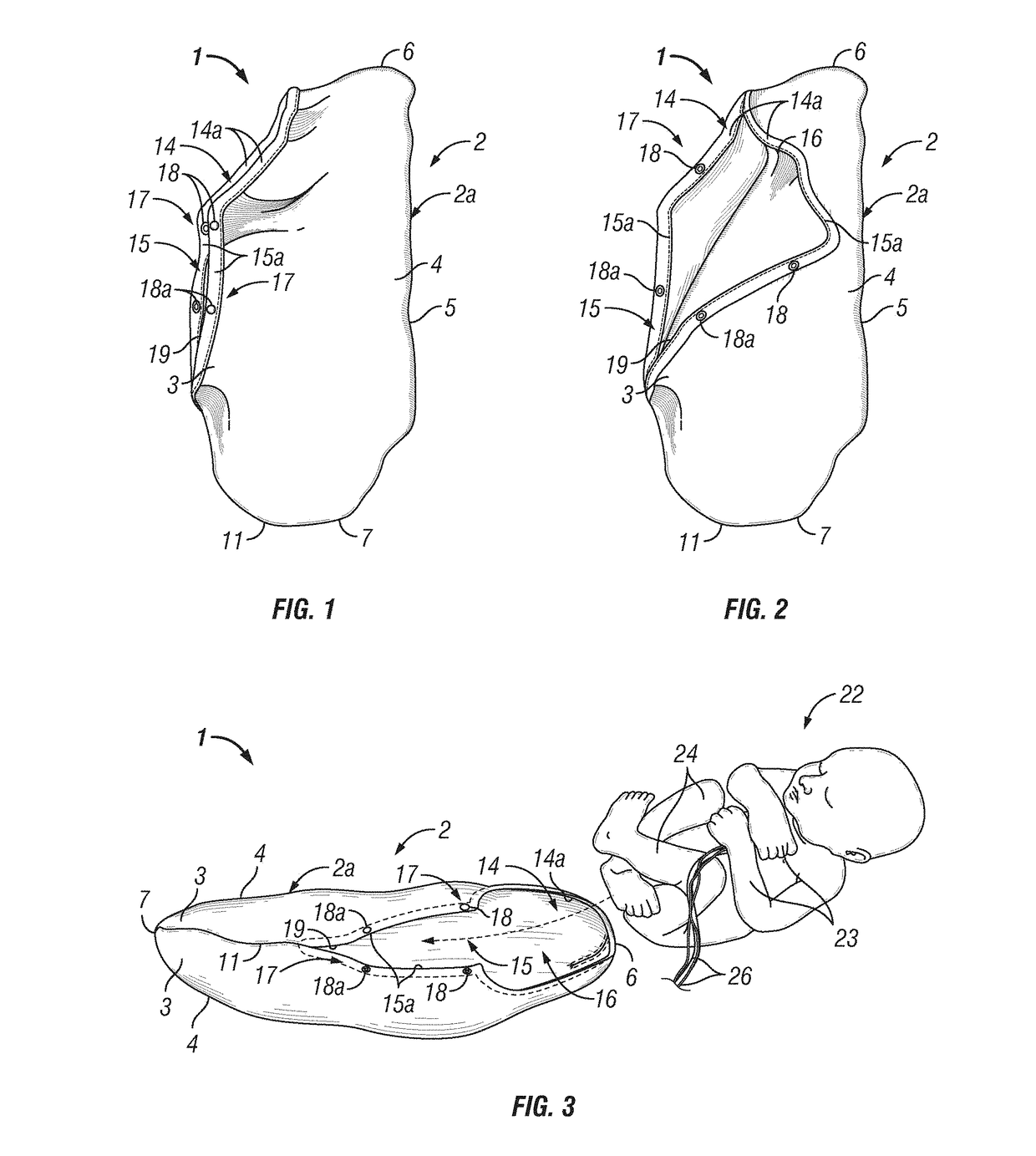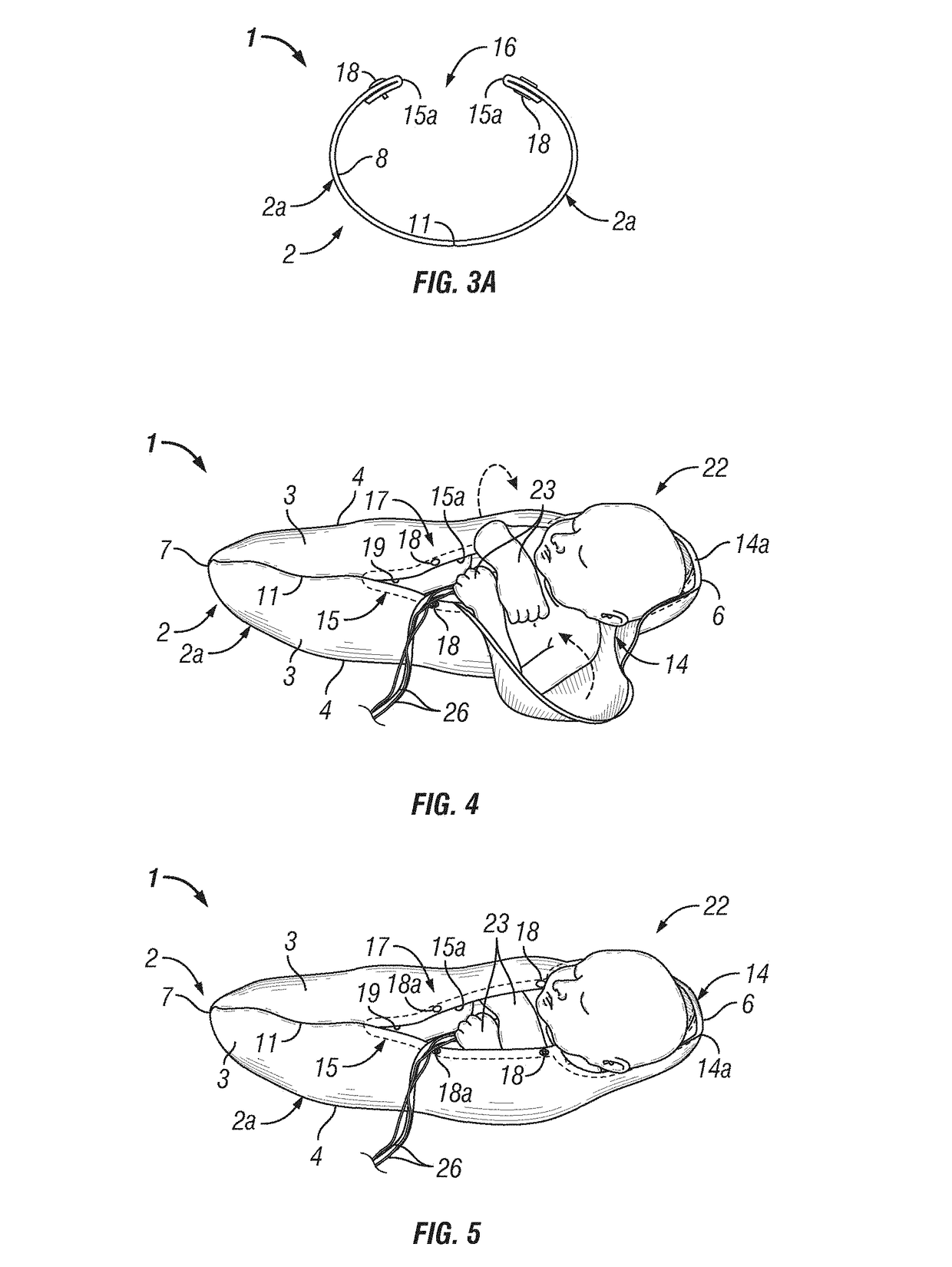Infant joint compression device and method
a compression device and infant technology, applied in the field of premature infant joint compression devices, can solve the problems of increasing the incidence of brain dysfunction, stressing and tiring conventional joint compression exercises, and significant reducing the number of cells of infants, so as to achieve substantial free and unhindered movement of arms
- Summary
- Abstract
- Description
- Claims
- Application Information
AI Technical Summary
Benefits of technology
Problems solved by technology
Method used
Image
Examples
example 1
[0028]This example illustrates the ability of a disclosed infant joint compression device to decrease the length of stay (LOS) of a premature infant in the neonatal intensive care unit. Subjects were all between 28 and 32 weeks gestation at birth and in good health, typical weight, with no medical conditions requiring other than routine care, routine medications, and routine diet. Infants were divided into two groups matching for birth age. At between 28-32 weeks a set of premature infants were placed in an infant joint compression devices comprised of cotton knit usually for infants under about 32 weeks at which time they would typically graduate to 8 oz fleece at approximately 32 weeks gestation, which they remained in continually except for brief periods of 15-30 minutes for four weeks. Another control group received routine neonatal intensive care unit (NICU) care and positioning except they received a ten minute exercise program 5 days a week for four weeks. As demonstrated in ...
example 2
[0029]This example illustrates a study for characterizing a disclosed joint compression device such as the effects on length of stay in the NICU, bone density, bone mass and / or weight. Sixty subjects (30 test infants in a disclosed infant joint compression device, 30 exercise controls) of healthy, premature infants recruited from the NICUs. Infants eligible for the study will be between 28 to 33 weeks gestation with appropriate weight for age. They will be tolerating enteral feeds at >110 kcal / kg of body weight / day on entrance into the study, have no supplemental oxygen requirements, and will be on no medications other than routine vitamins with iron or caffeine.
[0030]Infants will be assigned to either a disclosed infant joint compression device or bone stimulation exercise group on entry into the study. Infants will be matched by gestational age at birth, birth weight, and sex. An ultrasound of the left tibia will be obtained. A repeat ultrasound will then be completed, along with ...
PUM
 Login to View More
Login to View More Abstract
Description
Claims
Application Information
 Login to View More
Login to View More - R&D
- Intellectual Property
- Life Sciences
- Materials
- Tech Scout
- Unparalleled Data Quality
- Higher Quality Content
- 60% Fewer Hallucinations
Browse by: Latest US Patents, China's latest patents, Technical Efficacy Thesaurus, Application Domain, Technology Topic, Popular Technical Reports.
© 2025 PatSnap. All rights reserved.Legal|Privacy policy|Modern Slavery Act Transparency Statement|Sitemap|About US| Contact US: help@patsnap.com



